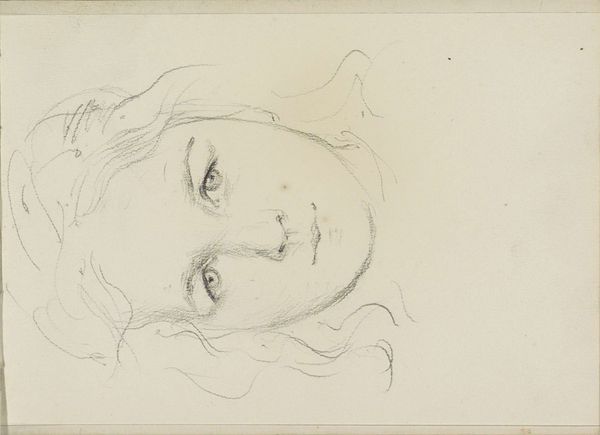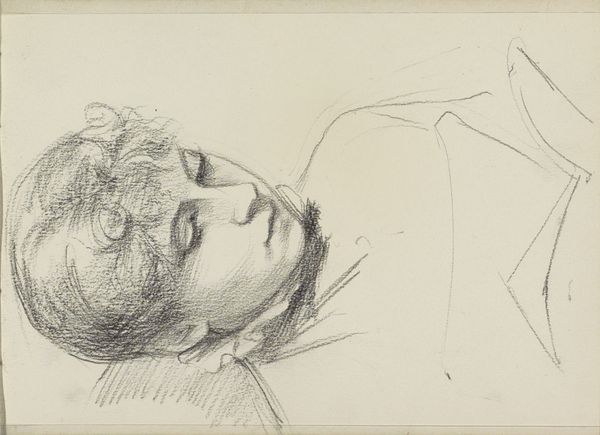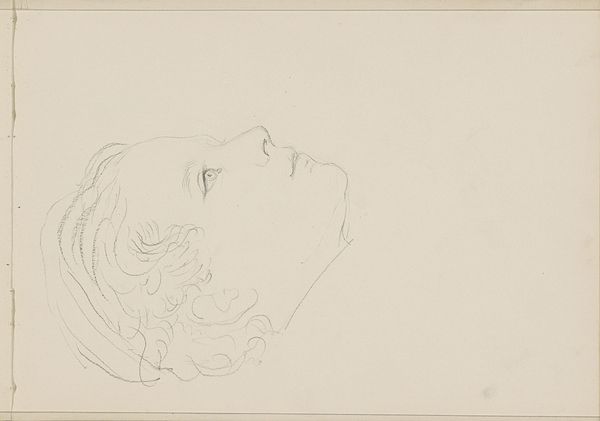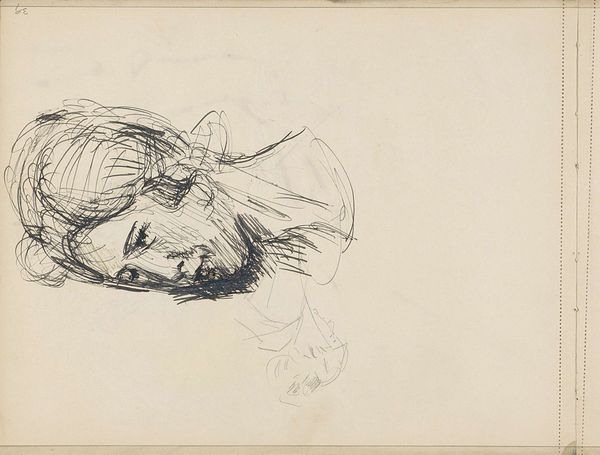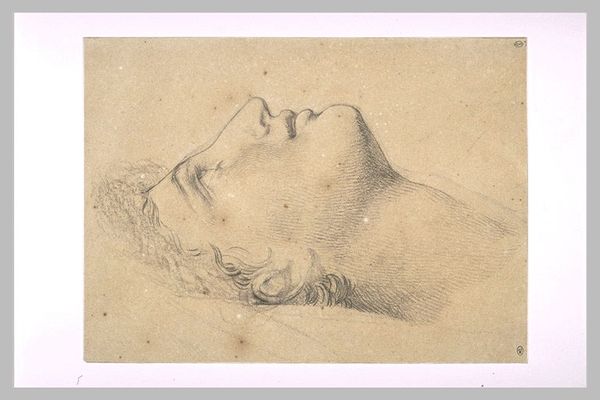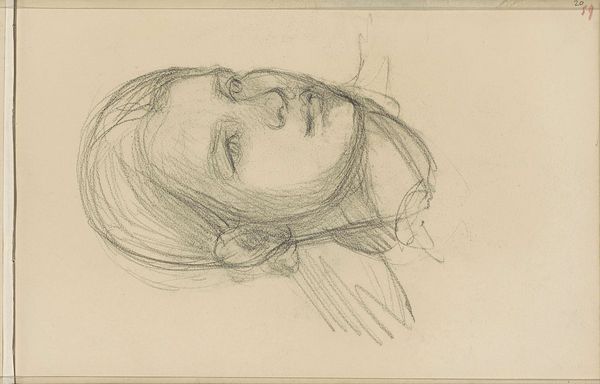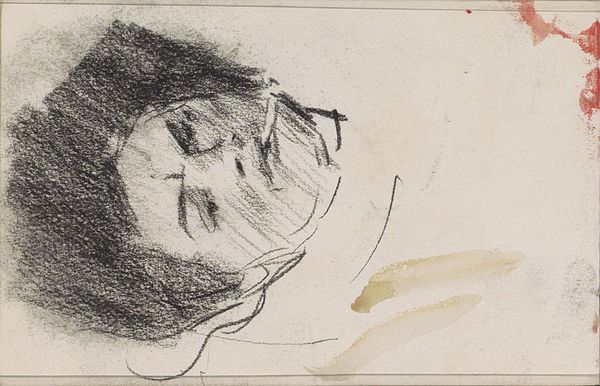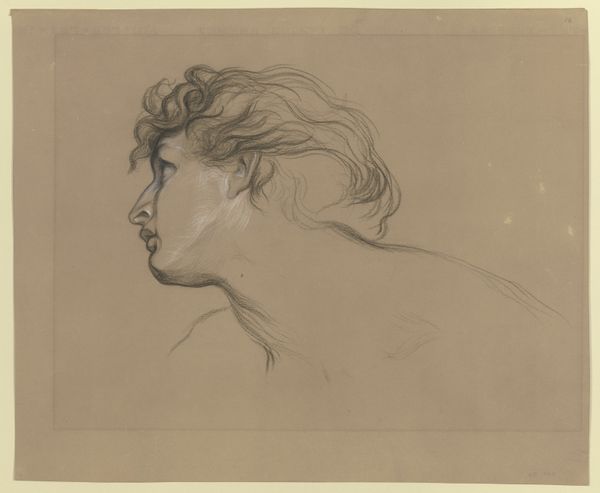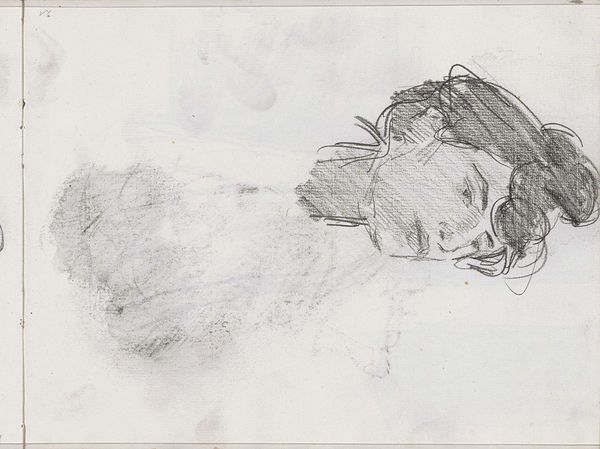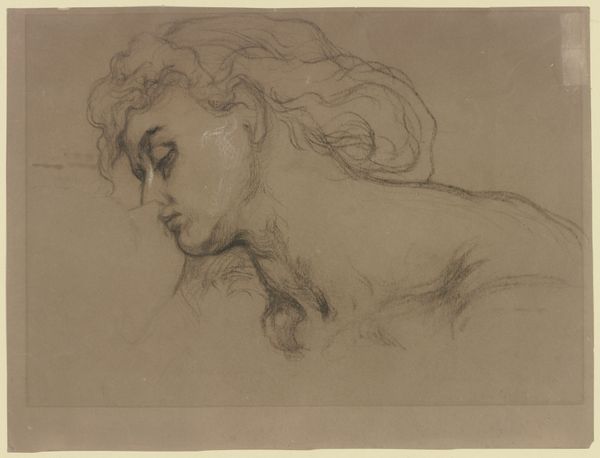
drawing, pencil, graphite
#
portrait
#
facial expression reference
#
drawing
#
facial expression drawing
#
portrait image
#
portrait reference
#
pencil
#
graphite
#
animal drawing portrait
#
portrait drawing
#
facial study
#
facial portrait
#
portrait art
#
realism
#
digital portrait
Dimensions: height 223 mm, width 282 mm
Copyright: Rijks Museum: Open Domain
Editor: This is "Head of a Dying Man," a graphite drawing by George Hendrik Breitner, dating between 1867 and 1923. The subject's face, with eyes closed, has a striking, unsettling stillness. What historical context should we consider when looking at this piece? Curator: Well, let's think about Breitner’s place in Amsterdam during that time. The late 19th century was a period of rapid industrialization and urbanization, accompanied by growing social inequality. Breitner was known for his depictions of working-class life, his unflinching portrayal of the city's realities. This drawing, with its vulnerability and apparent suffering, could reflect a broader interest in portraying human vulnerability, don't you think? Does that influence your reading? Editor: Yes, it does. I initially focused on the "dying" aspect and missed the wider social commentary. Was this drawing perhaps intended as a commentary on social realities, human fragility? Curator: Possibly. Breitner lived in a time when academic conventions about whose image could be memorialized in Art started changing. Previously art academies restricted images of people deemed 'worthy' and death images to heroic events, mythology, religion. This is neither; the 'worthiness' comes from another place. Editor: So, Breitner might have challenged conventional artistic subjects? Curator: Precisely! And perhaps his Realist approach opened space for social empathy? What do you make of that possibility? Editor: It’s compelling. Thinking about the period's socio-political shifts gives the drawing an added layer of depth. Curator: Indeed. And it speaks to how art actively reflects and shapes our understanding of societal structures and values. Editor: This really shows how a work's significance deepens when considering the context. Thanks for the new insights. Curator: My pleasure. I leave it to you to research if his "Head of a Dying Man" did spark a larger public debate about the ethics of memorializing a death from the margins.
Comments
No comments
Be the first to comment and join the conversation on the ultimate creative platform.

